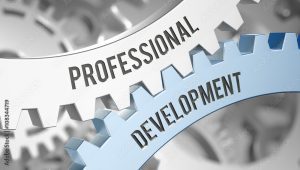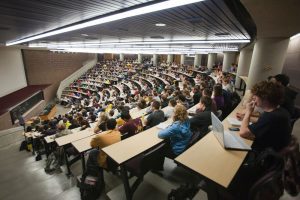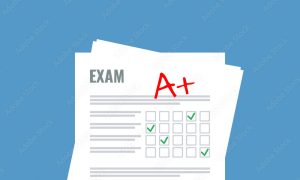GCSE
GCSE Music: Composition Approaches for Students Using Sequencing Packages, Lead Sheet or Aural Guide
Course Code:
T0086
£289.00+vat
ABOUT THIS COURSE
This NEW course is a practical course from which teachers can take away a range of effective approaches to support GCSE students in composition who are unfamiliar with using reading western staff notation and are using sequencing packages, lead sheets, aural guides and help them create and develop convincing, coherent compositions This course is excellent for teachers faced with this not unusual but very considerable challenge. Emphasis will also be on effective ways to use sequencing packages with students and how to access the higher grades. Consideration will also be given to students whose interests lie firmly outside Western Classical music, giving pointers as to how genres can be adapted so that the completed composition meets the marking criteria at a good level.BENEFITS OF ATTENDING
- Discover a range of composition strategies that work with all non-reading students
- Take away proven methods and techniques to enable all students to compose successfully
- Practically explore examples of successful compositions composed without the use of Western staff notation
- Gain expertise on how students can gain high marks in composition as non-notation students
- Learn ways to help your students compose using sequencing packages, even if your own expertise and experience is rooted in Western staff notation
PROGRAMME
Welcome and Introduction
10.00amThe Fundamentals: How Students Can Attain Good Marks In Composition
10.10am- Key general principles for achieving in composition at GCSE
- Understanding what different examination boards mean by a ‘score’
- Enabling students to capitalise on their performing and creative skills, including those whose interests lie firmly outside Western Classical music
- Advice on ‘capturing’ compositions as they develop
- Some tips on marking students’ work so that they get the grades you think they deserve
Break
10.40amEssential Composition Techniques for students
11.00am- Developing the skills required at KS3 and building into Year 10
- Strategies for developing melody composing skills
- Strategies for developing compositions that include chords
- Advice on ‘capturing’ compositions as they develop
Written Commentaries: Achieving High Marks In Compositions Using Written Commentaries
12.00pm- The advantages and challenges of this method – Deciding whether it is suitable for any of your students
- Teaching approaches and practical strategies support non-reader students to compose at GCSE level
- Strategies to give students frameworks that help to ensure they provide evidence of exploiting a broad range of musical elements and achieve the highest marks of which they are capable
Lead Sheets: Supporting Students To Achieve Good Marks In Compositions Using Lead-Sheets
12.30pm- The advantages and challenges of this method – Deciding whether it is suitable for any of your students
- Teaching approaches and practical strategies support non-reader students to compose at GCSE level
- Strategies to give students frameworks that help to ensure they provide evidence of exploiting a broad range of musical elements and achieve the highest marks of which they are capable
Lunch
1.00pmUsing Sequencing Software – Strategies to Support Students to Achieve Good Marks in Compositions
2.00pm- The advantages and challenges of this method – Deciding whether it is suitable for any of your students
- Practical and effective strategies and ideas to help our students compose a cohesive and effective composition at GCSE which achieves good marks
- Best ways to use sequencing packages over other methods of composition notation (staff notation, hand-drawn graphic scores, written commentaries)
Getting Students Started Composing Using Sequencing Packages
2.15pm- Playing/recording chords and later inverting them
- Playing/recording melodies
- Developing syncopation and cross-rhythms
- Developing more complex structures, including when students choose to compose in contemporary styles that tend to be more repetitive then developmental
- The importance of quantising
Break
2.45pmRaising Marks For Expressive Control When Using Sequencing Packages
2.50pm- Selecting/adapting instruments and other sounds
- Developing textures using both layering and voices that alter how chords are played
- The advantages – And dangers – Of changing dynamics and tempo, and using effects such as panning
- Exploring the possibilities offered by the software to create a composition that is in more than one key – and hints on how to make modulations/less subtle key changes sound convincing
The Final Product: Some Example Compositions, Considering What is Good and What Could Be Improved – and How
3.15pm- Examples of compositions by students with no staff notation reading or keyboard skills – What is successful and how it might have been improved
- Lead sheet
- Garageband
- Some tips on producing the scores
- Some tips on marking students’ work so that they get the marks you think they deserve
Depart
3.45pmThis course, tailored to suit, can be delivered in your school. Discuss this further with our CPD team on 01625 532974 or click below to make an enquiry.
COURSE LEADER
Dr Chris Maxim began his career lecturing in higher education before moving into the secondary sector. As an NQT (and Head of Music), he transformed the Music Department of a large inner-London secondary school, going on to create a thriving Performing Arts faculty and teaching KS3, GCSE and A-level. Following many years in senior leadership, including as Headteacher, he now works as a freelance musician (composer, conductor and organist) and education consultant, specialising in school leadership and music. To find out more about him, please visit his website: www.christophermaxim.co.uk
WHO SHOULD ATTEND
- Heads of Music
- Teachers of KS3/KS4 Music
- Heads of Performing Arts
THIS COURSE INCLUDES
- A Specially prepared notes, practical advice and guidance by the course leader
- Notes prepared by the educational experts leading the course
- Expert produced PowerPoint presentations
- CPD Certificate of attendance
Description
ABOUT THIS COURSE
This NEW course is a practical course from which teachers can take away a range of effective approaches to support GCSE students in composition who are unfamiliar with using reading western staff notation and are using sequencing packages, lead sheets, aural guides and help them create and develop convincing, coherent compositions
This course is excellent for teachers faced with this not unusual but very considerable challenge. Emphasis will also be on effective ways to use sequencing packages with students and how to access the higher grades. Consideration will also be given to students whose interests lie firmly outside Western Classical music, giving pointers as to how genres can be adapted so that the completed composition meets the marking criteria at a good level.
BENEFITS OF ATTENDING
- Discover a range of composition strategies that work with all non-reading students
- Take away proven methods and techniques to enable all students to compose successfully
- Practically explore examples of successful compositions composed without the use of Western staff notation
- Gain expertise on how students can gain high marks in composition as non-notation students
- Learn ways to help your students compose using sequencing packages, even if your own expertise and experience is rooted in Western staff notation
PROGRAMME
Welcome and Introduction
10.00am
The Fundamentals: How Students Can Attain Good Marks In Composition
10.10am
- Key general principles for achieving in composition at GCSE
- Understanding what different examination boards mean by a ‘score’
- Enabling students to capitalise on their performing and creative skills, including those whose interests lie firmly outside Western Classical music
- Advice on ‘capturing’ compositions as they develop
- Some tips on marking students’ work so that they get the grades you think they deserve
Break
10.40am
Essential Composition Techniques for students
11.00am
- Developing the skills required at KS3 and building into Year 10
- Strategies for developing melody composing skills
- Strategies for developing compositions that include chords
- Advice on ‘capturing’ compositions as they develop
Written Commentaries: Achieving High Marks In Compositions Using Written Commentaries
12.00pm
- The advantages and challenges of this method – Deciding whether it is suitable for any of your students
- Teaching approaches and practical strategies support non-reader students to compose at GCSE level
- Strategies to give students frameworks that help to ensure they provide evidence of exploiting a broad range of musical elements and achieve the highest marks of which they are capable
Lead Sheets: Supporting Students To Achieve Good Marks In Compositions Using Lead-Sheets
12.30pm
- The advantages and challenges of this method – Deciding whether it is suitable for any of your students
- Teaching approaches and practical strategies support non-reader students to compose at GCSE level
- Strategies to give students frameworks that help to ensure they provide evidence of exploiting a broad range of musical elements and achieve the highest marks of which they are capable
Lunch
1.00pm
Using Sequencing Software – Strategies to Support Students to Achieve Good Marks in Compositions
2.00pm
- The advantages and challenges of this method – Deciding whether it is suitable for any of your students
- Practical and effective strategies and ideas to help our students compose a cohesive and effective composition at GCSE which achieves good marks
- Best ways to use sequencing packages over other methods of composition notation (staff notation, hand-drawn graphic scores, written commentaries)
Getting Students Started Composing Using Sequencing Packages
2.15pm
- Playing/recording chords and later inverting them
- Playing/recording melodies
- Developing syncopation and cross-rhythms
- Developing more complex structures, including when students choose to compose in contemporary styles that tend to be more repetitive then developmental
- The importance of quantising
Break
2.45pm
Raising Marks For Expressive Control When Using Sequencing Packages
2.50pm
- Selecting/adapting instruments and other sounds
- Developing textures using both layering and voices that alter how chords are played
- The advantages – And dangers – Of changing dynamics and tempo, and using effects such as panning
- Exploring the possibilities offered by the software to create a composition that is in more than one key – and hints on how to make modulations/less subtle key changes sound convincing
The Final Product: Some Example Compositions, Considering What is Good and What Could Be Improved – and How
3.15pm
- Examples of compositions by students with no staff notation reading or keyboard skills – What is successful and how it might have been improved
- Lead sheet
- Garageband
- Some tips on producing the scores
- Some tips on marking students’ work so that they get the marks you think they deserve
Depart
3.45pm
Additional information
| Location and Date | Online | Friday 08 November 2024 |
|---|





